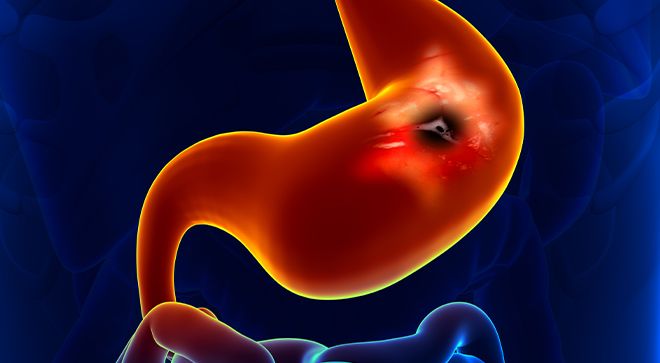News
Article
Imfinzi-Chemo Combo Shows Promise in Ongoing Gastric Cancer Trial
Author(s):
The addition of Imfinzi to a chemotherapy regimen called FLOT tended to boost pathologic complete response rates in patients with gastric or gastroesophageal junction cancer.

Imfinzi (durvalumab) plus 5-fluorouracil, leucovorin, oxaliplatin, and docetaxel — a chemotherapy regimen known as “FLOT” — outperformed placebo plus FLOT for patients with resectable gastric cancer or gastroesophageal junction (GEJ) cancer, according to a pre-planned interim analysis of the ongoing phase 3 MATTERHORN study.
According to study findings, which were presented at the 2023 ESMO Congress, patients in the Imfinzi arm experienced a pathologic complete response (pCR; the absence of residual invasive cancer) rate of 19% compared with 7% among those in the placebo arm. Based on the investigator assessment, the pCR rate in each respective arm was 22% vs 8%. The rate of combined complete and near-complete pathological response —defined as single or rare small groups of small cancer cells at the time of resection —was 27% and 14% in each arm.
In a subgroup of German patients, the pCR rate was 30% with the Imfinzi-based regimen vs 13% with the placebo regimen.
“Looking at the subgroup analysis, it seems that all subgroups have benefitted from the addition of (Imfinzi) in terms of pCR,” said presenting author Dr. Salah-Eddin Al-Batran, director of the Institute of Clinical Cancer Research and director of Gastrointestinal Oncology at Krankenhaus Nordwest-University Cancer Center, Frankfurt.
In the international, double-blind phase 3 MATTERHORN study, 948 patients were randomly assigned to receive 1500 mg of Imfinzi (474 patients) or placebo (474 patients) every four weeks plus FLOT every two weeks on days 1 and 15 for four cycles prior to surgery. Postoperative treatment consisted of two additional doses of Imfinzi or placebo plus four doses of FLOT followed by 10 doses of maintenance Imfinzi or placebo. Of note, maintenance therapy is given to patients after their main line of therapy to prevent their cancer from growing or coming back.
The trial’s primary end point was event-free survival (EFS; time a patient lives without disease-related complications, such as progression, recurrence or death). Secondary end points included pCR and overall survival (time from treatment until death from any cause).
Patients with gastric and GEJ adenocarcinoma and stage 2, 3 or 4A disease were eligible for enrollment on the trial. Additional inclusion criteria included having no evidence of metastatic disease, no prior treatment and an ECOG performance status of 0 or 1, indicating that they can perform their daily tasks with little to no assistance. Investigators stratified patients based on geographic region, clinical lymph node status and PD-L1 status.
In the Imfinzi and placebo arms, respectively, the median patient age was 62 years (range, 26-84) and 63 years (range, 28-83). Additionally, most patients in each respective arm were male (69% and 75%), had gastric cancer (68% and 67%) and had stage T3 disease (65% and 68%). Most in each group also had lymph node-positive disease (69% and 70%), a PD-L1 expression of at least 5% (50% and 52%) and unspecified adenocarcinoma or other histology (41% and 47%).
Overall, 87% and 84% of patients receiving Imfinzi and placebo, respectively, underwent surgery. Additionally, the resection for complete cure or remission rate was 86% and 86% in each respective arm.
According to Al-Batran, there “was a clear downstaging and downsizing using (Imfinzi),” as the rate of stage T0 disease (when the main tumor can no longer be found) was 23% in patients treated with the experimental regimen compared with 11% in those receiving the placebo-based combination. Additionally, the rate of node-negative disease in each respective arm was 52% and 37%.
With respect to treatment exposure, 69% of patients in the Imfinzi arm and 67% of patients in the placebo arm received at least two cycles of postoperative treatment. Of note, 63% of patients in each arm were treated with four postoperative doses of FLOT.
Regarding toxicities potentially related to study treatment, Al-Batran reported that grade 3/4 treatment-related side effects affected 58% and 56% of patients in the Imfinzi and placebo arms, respectively. Serious side effects potentially related to study treatment occurred in 20% and 16% of patients in each respective group. Additionally, the most common grade 3/4 toxicities in each group included neutropenia (20% and 21%) and neutrophil count decreases (19% and 22%).
“The MATTERHORN study is currently ongoing for its primary end point (of EFS), which we hope to see very soon,” Al-Batran concluded.
For more news on cancer updates, research and education, don’t forget to subscribe to CURE®’s newsletters here.















